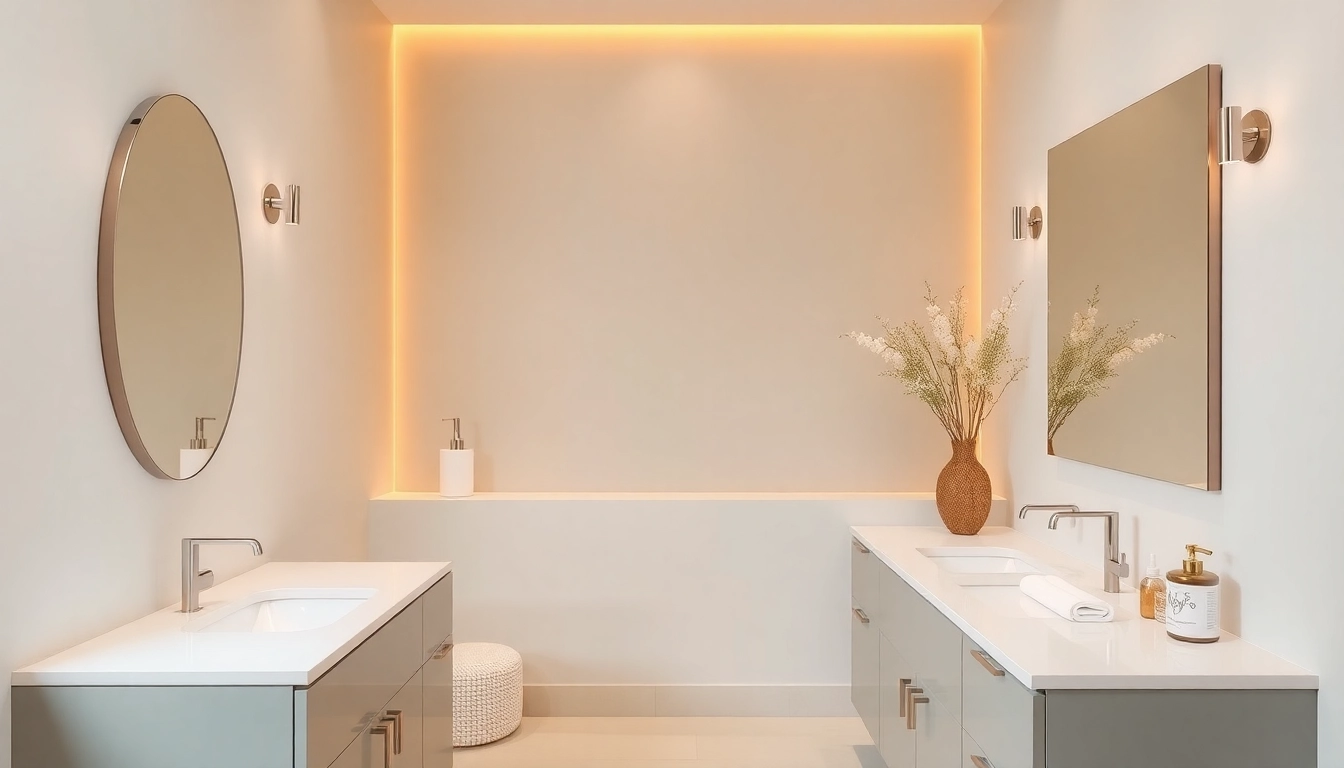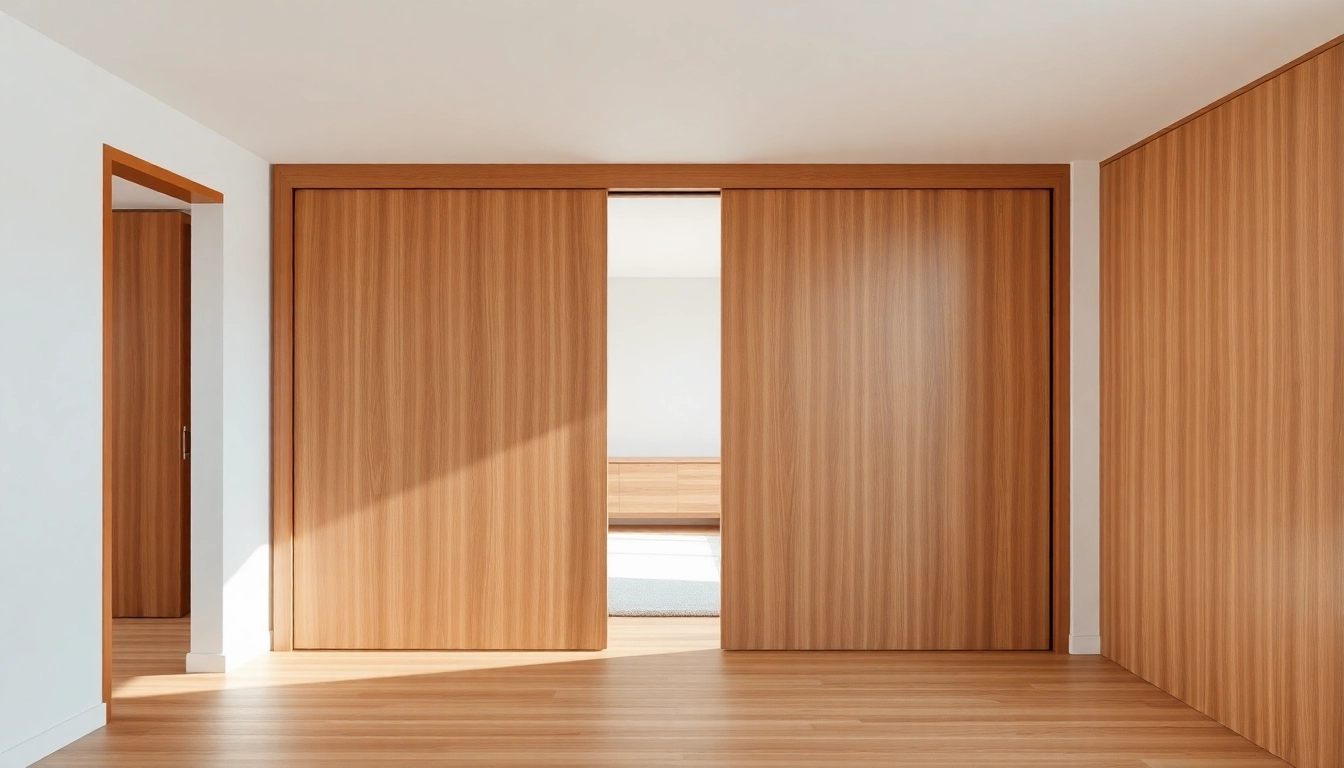Understanding the Basics of a Bathroom Remodel
What is a Bathroom Remodel?
A bathroom remodel is an extensive renovation project aimed at transforming the bathroom space, enhancing its aesthetics, functionality, and overall comfort. This process typically involves upgrading fixtures and fittings, renovating or changing the layout, and even improving plumbing and electrical systems to meet current standards. Whether you want to create a spa-like retreat, update old features, or simply make better use of the space, a bathroom remodel can add value to your home and improve your daily living experience. Many homeowners often undertake this project to elevate their home’s appeal, especially if they are considering selling. The right alterations can significantly boost market value while providing a personal oasis for relaxation.
Common Goals for Bathroom Remodeling
Homeowners embark on a bathroom remodel for various reasons, including:
- Functionality Improvement: Updating fixtures, adding storage, or changing the layout to make the bathroom more user-friendly.
- Aesthetic Update: Creating a visually appealing space by modernizing tile, paint, or fixtures.
- Increased Home Value: Enhancing the property’s market value, especially important if planning to sell.
- Energy Efficiency: Installing eco-friendly fixtures to save on water and energy bills.
- Enhanced Safety: Upgrading old plumbing and electrical systems to meet safety standards.
Budgeting for a Successful Remodel
Budgeting is a crucial aspect of any remodeling project. A successful bathroom remodel can range from a few hundred to tens of thousands of dollars, depending on various factors including size, materials, and complexity of the work involved. To ensure the project stays on track financially, consider the following steps:
- Determine Your Budget: Establish a realistic budget that accounts for labor, materials, permits, and unexpected costs.
- Prioritize Needs vs. Wants: Identify which features are essential for functionality and which are desirable for aesthetics.
- Research Costs: Gather estimates on fixtures, labor, and other materials before finalizing your budget.
- Set Aside a Contingency Fund: Expect unexpected costs; a general rule is to set aside 10-20% of your budget for contingencies.
Planning Your Dream Bathroom Remodel
Assessing Your Current Bathroom
The first step in planning a bathroom remodel is evaluating your existing space. Take note of what works and what doesn’t. Evaluate factors such as:
- Layout: Does the current arrangement allow for efficient use of space?
- Storage: Is there enough storage for your needs?
- Aging Fixtures: Are your fixtures outdated or inefficient?
- Plumbing and Electric: Is everything functioning correctly and up to code?
Document these assessments to guide your decisions and allow for a clear vision of the changes needed.
Choosing the Right Design Style
Your bathroom’s design should reflect your personal style as well as complement the overall aesthetic of your home. Popular styles include:
- Modern: Characterized by sleek lines, minimalistic features, and a neutral color palette.
- Traditional: Featuring classic elements, ornate fixtures, and a more vintage vibe.
- Rustic: Incorporating natural materials, warm colors, and a cozy ambiance.
- Contemporary: Emphasizing innovative designs and sustainable materials.
Consider browsing websites, showrooms, or design magazines for inspiration, and don’t hesitate to create a mood board that encapsulates your vision.
Creating a Functional Layout
An effective layout is fundamental in ensuring that your bathroom functions efficiently. Key components to consider include:
- Traffic Flow: Ensure the space allows for easy movement, especially when multiple people are using the area.
- Zoning: Separate areas for bathing, grooming, and toilet functions if space permits.
- Accessibility: Consider the plumbing layout to avoid complicated changes that could inflate costs.
Using 3D modeling software or seeking professional help can assist in visualizing potential layouts and optimizing space.
Essential Elements in a Bathroom Remodel
Key Fixtures and Fittings
The selection of fixtures and fittings significantly influences the functionality and aesthetics of the bathroom. Here are some key elements to consider:
- Vanities: Functionality and style are crucial. Choose one that offers enough storage and complements the design.
- Showers and Bathtubs: Select based on your space and user preferences; consider walk-in showers for a modern feel.
- Toilets: Modern toilets offer water-saving features, comfort height options, and various styles.
- Lighting: Layered lighting enhances functionality. Consider ambient, task, and accent lighting.
Choosing Materials and Finishes
Choosing the right materials and finishes affects both aesthetics and maintenance. Consider the following:
- Tile: A versatile option for walls and floors, tiles come in various textures, colors, and patterns. Ceramic and porcelain are popular due to their durability.
- Countertops: Options like granite, quartz, and marble offer beauty and durability but vary greatly in maintenance.
- Paint: Waterproof and mold-resistant paint is essential for bathroom walls.
- Accessories: Towel bars, mirrors, and decorative accents should complement the overall theme.
Incorporating Storage Solutions
Effective storage solutions are critical for maintaining an organized bathroom. Here are some strategies:
- Built-in Shelves: Integrate shelving into wall spaces for effective storage without taking up floor space.
- Wall Cabinets: Utilize vertical space with cabinets above toilets or vanities.
- Vanity Storage: Choose vanities with drawers and cabinets for hidden storage.
- Over-the-Door Organizers: Use the inside of cabinet doors for additional storage of smaller items.
DIY vs. Professional Bathroom Remodeling
When to Consider DIY Projects
Many homeowners consider tackling parts of the remodel themselves to save money. Common DIY projects include:
- Painting: A new coat of paint can dramatically change the look and feel of a space.
- Fixture Installation: Replacing faucets or showerheads can be manageable for those with some basic tools.
- Tiling: While more challenging, with the right patience and research, many homeowners opt to tile themselves.
However, be realistic about your skills and time, and ensure you understand the necessary codes and regulations for safety.
Benefits of Hiring a Professional
While DIY can be appealing, hiring a professional comes with significant advantages, such as:
- Expertise: Professionals bring a wealth of knowledge and experience, ensuring quality workmanship.
- Time Savings: Professionals can complete projects faster, minimizing inconvenience.
- Access to Resources: Professionals often have access to materials and suppliers that may not be available to the public.
- Compliance with Regulations: Ensuring that the remodel adheres to local building codes can often be complicated without experience.
Finding the Right Contractor for Your Remodel
Selecting a contractor for your bathroom remodel is a critical decision that can significantly impact the project’s outcome. Here are some steps to consider when searching for the right professional:
- Research: Look for licensed and insured contractors in your area.
- Read Reviews: Websites like Yelp, Google Reviews, and social media can provide insights into past clients’ experiences.
- Ask for References: Contact previous clients to discuss their experience and satisfaction with the work performed.
- Obtain Multiple Quotes: Get at least three estimates to compare pricing and services.
- Trust Your Instincts: Choose a contractor with whom you feel comfortable discussing your ideas and concerns.
Evaluating Your Bathroom Remodel Results
Tips for Assessing Finished Work
- Functionality: Ensure everything operates as intended – faucets, lights, toilets, and exhaust systems.
- Finish Quality: Inspect finishes for consistency—paint, tile alignment, and fixture placement should appear polished and professional.
- Cleanliness: Ensure that dust, debris, and used materials are removed from the site.
Common Mistakes to Avoid
Even the most enthusiastic DIYers can make errors in their bathroom remodel. Some common pitfalls include:
- Ignoring Water Issues: Underestimating plumbing problems can lead to costly repairs down the line. Inspect and address these thoroughly.
- Over-Designing: Aesthetic choices can become overwhelming; strive for a balance between functionality and style.
- Neglecting Lighting: Insufficient lighting can defeat the remodel’s purpose; take care to install adequate lighting fixtures.
- Not Planning for the Future: Design for your current lifestyle and potential future needs, understanding that family dynamics can change.
Measuring the Impact on Home Value
Lastly, one measure of success in a bathroom remodel is its impact on your home’s market value. Studies show that a renovated bathroom can return 60-70% of the investment on resale. To maximize this impact:
- Focus on Features: Highlight modern and desirable features, such as energy-efficient plumbing and high-quality materials.
- Stay Neutral with Design: Opt for a neutral palette that appeals to a broad range of buyers.
- Keep Up with Trends: Stay informed about bathroom trends and incorporate these elements where possible.


